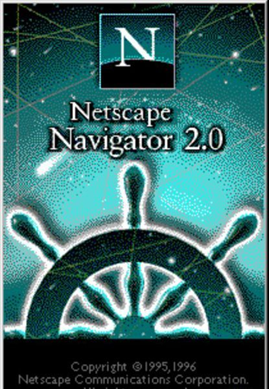
When news broke that Mozilla was launching a wave of cuts - the second this year - the response was immediate. It did not escape the attention of the developers that the company had already cut off all the corporate fat and is now shredding living muscles. She disbanded the threat defense team . She “cut the cost” of developer tools, a highly popular section. She slashed the Servo team , which was working on a next-generation Rust-based browser engine. She wiped out the MDN team . In general, the two waves of layoffs took away almost a third of employees.
Given that programmers make up a significant portion of Mozilla's very modest user base, truncating developer tools seems particularly short-sighted and will disappoint the most dedicated users. However, people who are not familiar with the history of the company are likely to take the situation as another example of how a player has failed to break into a competitive market, relying on niche opportunities. After all, the company's flagship product, the Firefox browser, hasn't claimed to be a market leader in years. So, this is just the process of extinction of another dinosaur, what else?
But Mozilla is not limited to Firefox alone. This is not your run-of-the-mill small IT company being ousted by trillion-dollar giants like Microsoft, Apple and Google. Mozilla has a rich history and significant contributions to the development of web standards. The fact that she is now in a critical situation is a cause for concern for all of us.
The history of Mozilla in a nutshell
Mozilla was born out of the ashes of one of the world's most spectacular software failures. Netscape Navigator, which pioneered the development of web browsers in the mid-90s, has gone from being an Internet master to an outsider in a matter of months. The reason was Microsoft's aggressive merger policy towards Internet Explorer, and this is of course unfair. But most IT experts then agreed that browsers would inevitably become free and generally available in the future. Building a business on this type of product has become a hopeless endeavor.

Then, in a flash of inspiration, Netscape Navigator formed the non-profit Mozilla Organization (later renamed the Mozilla Foundation) to develop a suite of Netscape built-in browser, mail, and chat applications . This initiative gradually faded in the face of competitors who had more money and more users. But over the years, the Mozilla Foundation has transformed into a different type of organization - its new goal was to promote open web standards and web literacy (not to mention the other, somewhat utopian principles declared in the famous Mozilla manifesto ).
Many years later, a group of developers at Mozilla renewed their attempts to create a browser in a product called Firefox. On its base appeareda separate corporation that is wholly owned and sponsored by the Mozilla Foundation to this day. If these technologies were closed within the confines of AOL, the company that bought Netscape, they would have died long ago, the shifting winds of Internet mods would scatter them to dust. In fact, even AOL gave up on the software it inherited from Netscape and switched to Internet Explorer, after which it soon faded into obscurity.
Mozilla's greatest hits
Firefox is Mozilla's most famous creation. While it is now easily underestimated as just one of the popular browser alternatives, it was once a pioneer in ad blocking, data protection, and developer tools (Firebug far outstripped Chrome DevTools).
However, if Mozilla's contribution were limited to this, it would be little more than a second hitch on the path to world domination of Chromium and WebKit. Meanwhile, it was Mozilla that gave rise to some of the most significant web technologies. Below are four of her best initiatives.
Rust
When Netscape went downhill, few realized that the most valuable thing that it brought to the world would be a little frail scripting language. This language was called JavaScript.
JavaScript was born during the brief period when Netscape was king of the mountain on the web. Nevertheless, twenty years after the collapse of Netscape, it continues to grow in popularity and increasingly dominates other languages. With that in mind, it's not hard to imagine that the most valuable innovation Firefox will leave behind is the stunningly efficient statically typed Rust .

The fascination of Rust falls within the whole range of developers. Those who think C ++ are too liberal and generous with bugs like Rust. But those who find traditional object-oriented programming languages too heavy and inefficient also love Rust. And despite the fact that relatively few use it, Rust has consistently held the first place in the charts of the most beloved languages on Stack Overflow since 2016.
Unfortunately, the development of Rust is very modest in the new Mozilla policy. With the latest wave of cuts, the manual got rid of the programmers specializing in this language, and also disbanded the Servo teamwhich intended to make a new browser engine in Rust. But at the moment it seems that Rust will not sink into oblivion along with the company that spawned it. The creation of a separate organization Rust Corporation is already in the planning stage.
HTML5
Now it is even hard to remember, but once upon a time a bloody war raged in the world between HTML and XHTML - a version of HTML without backward compatibility, reimagined using a more rigid XML syntax. Moreover, HTML was losing. In 2004, the W3C, the organization responsible for developing standards for HTML, officially suspended all work on everything related to it.
That would have been the end of it if it hadn't been for the WHATWG , the community that Apple, Opera and Mozilla have quickly put together for the occasion. What happened next, we all know: The WHATWG won, forced the W3C to change course, and spawned a whole bunch of standards under the general heading HTML5, including non-Flash video, web workers , web sockets, and more. These standards are with us to this day.

Mozilla, of course, was not the only actor in this drama. But she played a critical role in shaping the movement that shaped the path of technology for the decade to come.
Asm.js
One of the best tricks Mozilla gave us was asm.js. Strictly speaking, asm.js is just an optimized flavored JavaScript, trained in tricks like bitwise operations for strong typing. However, using his example, the developers from Mozilla showed that they can compile other languages, up to similar micro-languages, with an eye to increased performance. With little more than informal specs and an Emscripten transpiler , they took real-time 3D games made with the Unreal engine in C ++ and put them into a browser.
Asm.js spurred the development of one of the most important innovations in modern web history - WebAssembly.... WebAssembly follows the asm.js path, which is a kind of machine code for the web that runs in JavaScript. It also introduces some enhancements, such as a compact binary format for code that does not need parsing or compilation. Many of the most exciting innovations these days are created with WebAssembly; among them - the Blazor framework from Microsoft.
WebAssembly is a collaborative project between Mozilla and the creators of other web browsers, but it wouldn't have picked up so quickly if it hadn't been for the asm.js. Even now, asm.js plays the role of a polyfill in WebAssembly, a backward-compatible fallback for a few older browsers that don't support WebAssembly.
MDN (Mozilla Developer Network)
MDN is a huge resource for high quality developer documentation. Something like the Wikipedia of modern web development or the W3Schools equivalent, only several times better.
If you've ever scoured the Web looking for answers to your questions, you've probably come across treasures of MDN wisdom. You may have used the comprehensive CSS properties reference there or the carefully organized HTML DOM material . Maybe you are digging headlong into information about some fresh API like IndexedDB or WebRTC (there is no outdated information on MDN). Or you may have read an ambitious introduction to HTMLthat starts with describing markup for dummies and builds up the complexity all the way to JavaScript frameworks like React, Ember, and Vue.
The stock of MDN documentation is not limited to what is presented on the site. For example, the browser compatibility information Mozilla gathers is so extensive that it is used to create services like caniuse.com .

Mozilla has now dealt with the MDN team. The management promises that it will not let the popular resource die, probably planning to involve partners and the community in the case. But without financial investment and the knowledge of people who are interested in the project, it cannot be said with certainty that MDN will be able to keep its standards at the same level. After all, Mozilla already has a graveyard of web education initiatives that died in the bud: Webmaker, Mozilla Backpack and my personal favorite X-Ray Goggles (an extremely easy way to master the beginnings of HTML, which is more useful than ninety percent of video tutorials ). This cannot bode well for the future.
What killed Mozilla?
Mozilla is not yet completely dead, but the tipping point is clearly over. In a letter to the dismissed employees, the administration refers to the coronavirus epidemic, but this explanation is questionable. After all, the Mozilla Foundation was created precisely to ensure that momentary turmoil does not confuse Mozilla, so that the team can focus on the long term. Its task was to protect developers from the whims of management, one-day trends, Silicon Valley investors who sleep and see how to double their capital. The epidemic will end sooner or later, but it will not be easy to bring the torn apart team to its former form and again gain the trust of the developers.
The truth, which the company rarely talks about, and IT publishers often, is that Mozilla has chosen a very shaky revenue model: it is tied to a generous advertising offer from a competitor that also makes browsers. More than 90% of Mozilla's profits come from a deal with Google that makes Firefox use the search engine by default. In return, Mozilla receives over four hundred million dollars in annual payments . Google has extended the deal several times already, despite Mozilla's market reach steadily deteriorating.

In recent years, Google has been renewing deals with less readiness and enthusiasm. Perhaps the management continues to support Firefox only out of fear that otherwise the browser living on difficult times will completely die out and then the attention of antitrust organizations will focus on Google (for similar reasons, Microsoft once invested in Apple ). But whatever Google's motives, Mozilla's decision to rely almost entirely on contributions from an IT mega-corporation looks like a major strategic mistake.
Periodically, Mozilla has attempted to create long-running commercial products such as Firefox OS, an expensive VPN, and a premium bookmarking service. These attempts, for the most part, have been unsuccessful. Mozilla (which is a corporation, not a foundation) has now embarked on a new, not very encouraging goal : "to grow core browser resources by differentiating user experience." This can be understood in different ways, but at least one interpretation is that they expect to catch up by playing with the interface and wrapping some of the products in new marketing wrappers. If so, then Mozilla's heartbreaking sunset story is coming to its final chapters.